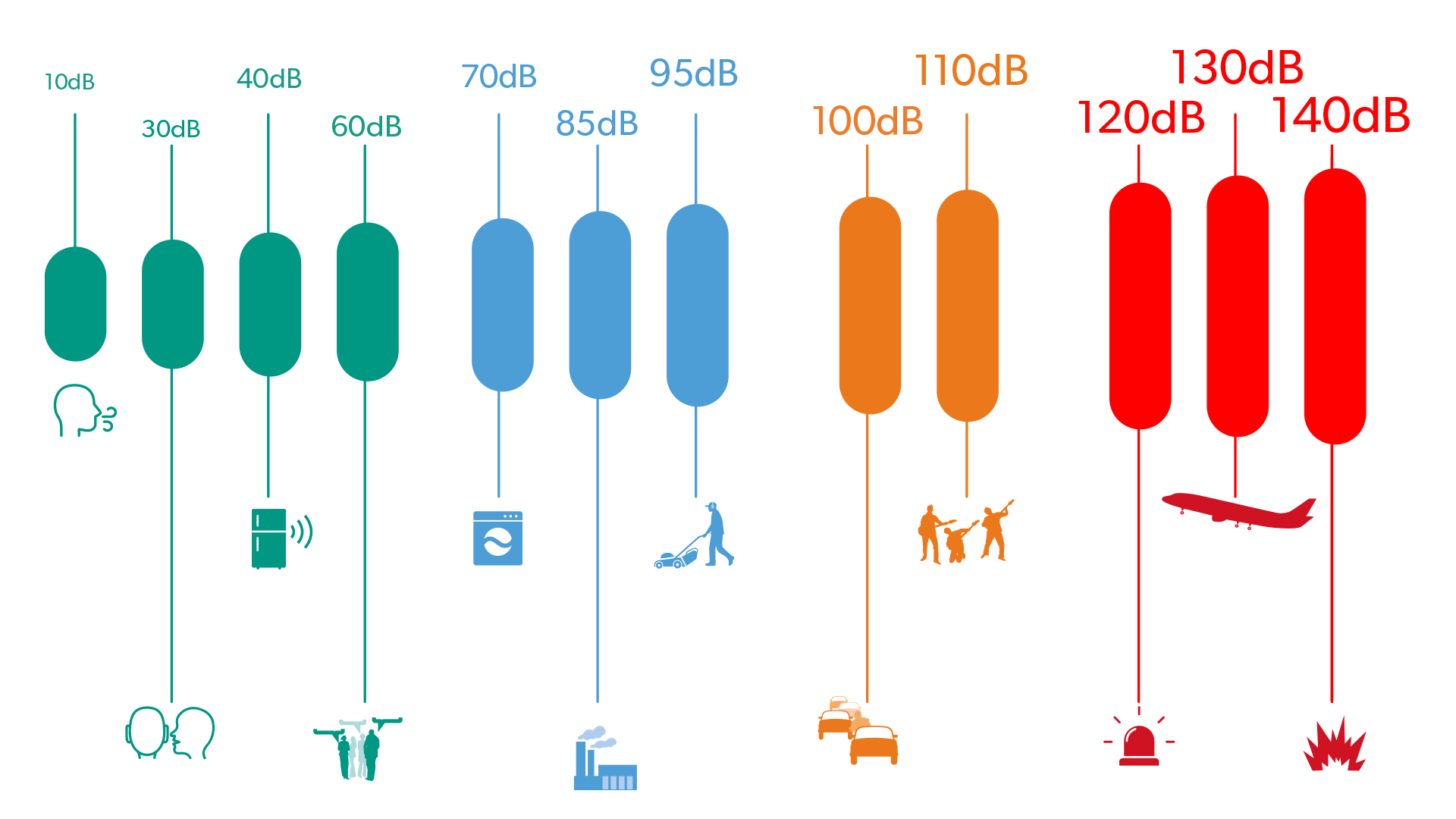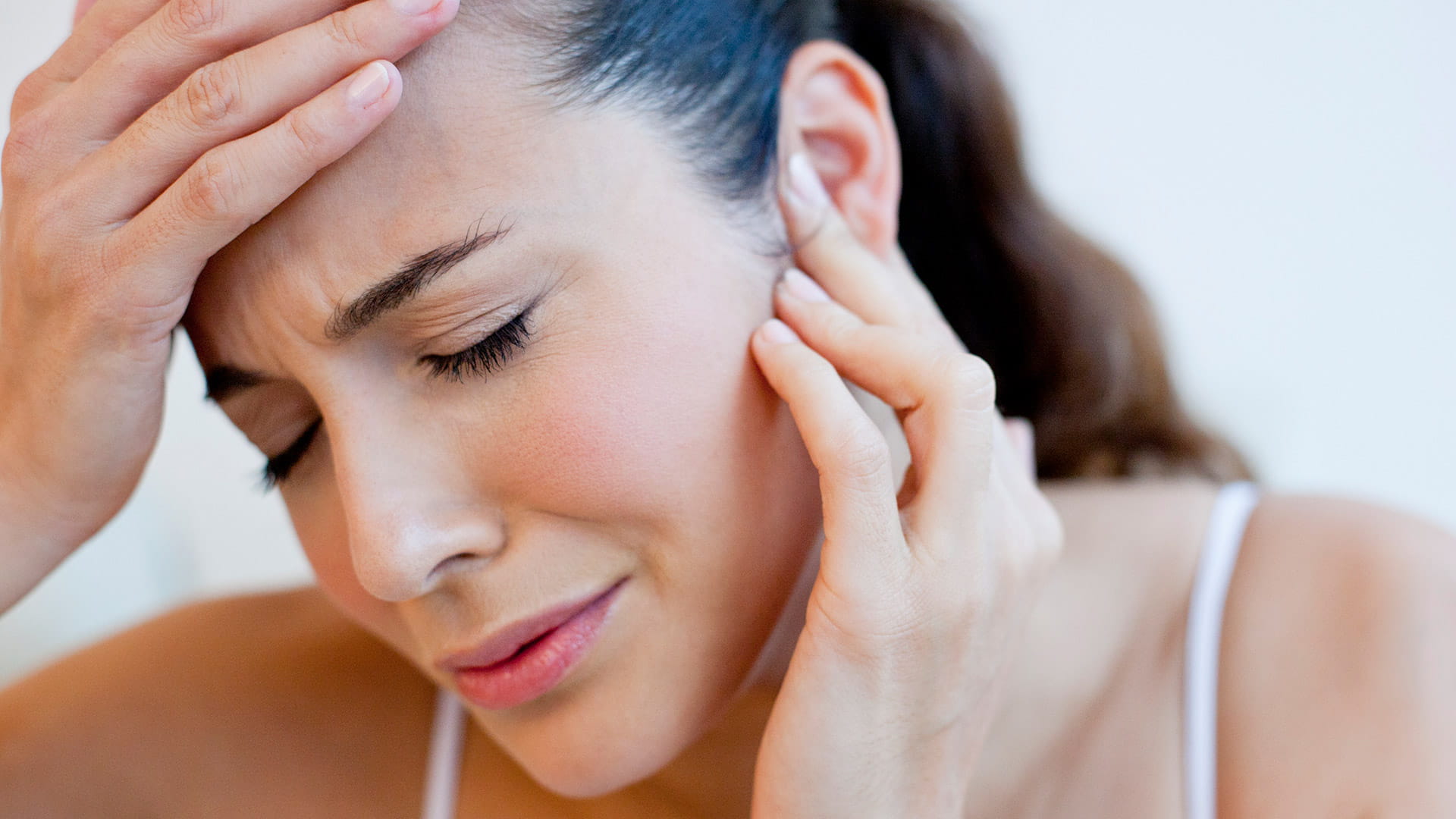

How much noise is safe?
Noise exposure can be dangerous to your hearing. Loud noise above 120 decibels (dB) can cause immediate harm to your ears.
Explosion – 140dB
Nearby jet engine – 130dB
Nearby siren – 120dB
Sounds at these levels can cause hearing loss within 2 to 15 minutes:
Loud music (recorded or live) – 110dB
Train, car horn, large sporting event – 100dB
Motorcycle, lawnmower – 95dB (can damage your hearing after 50 minutes)
Noisy factory, busy restaurant – 85dB (can damage your hearing after 2 hours)
Washing machine, dishwasher – 70dB
Sounds at these levels typically do not damage your hearing:
Normal conversation, air conditioning – 60dB
Refrigerator – 40dB
Whisper – 30dB
Normal breathing – 10dB
Source: Centers for Disease Control and Prevention (2019)
FAQs about safe noise levels
The safe noise level is typically considered to be below 85 decibels (dB) for extended periods of time.
Prolonged loud noise exposure can lead to permanent hearing loss, tinnitus, and other hearing-related issues.
You can measure the decibel level of noise using a decibel meter, which can be purchased at many electronics stores. There are also several apps that measure noise levels.
Symptoms of hearing damage from loud noise can include ringing in the ears, difficulty understanding speech, and a decrease in overall hearing ability.
Once your hearing is damaged by loud noise it is typically permanent and cannot be reversed. The best way to protect your hearing is to prevent damage in the first place by avoiding excessively loud noises and using protective gear when necessary.


